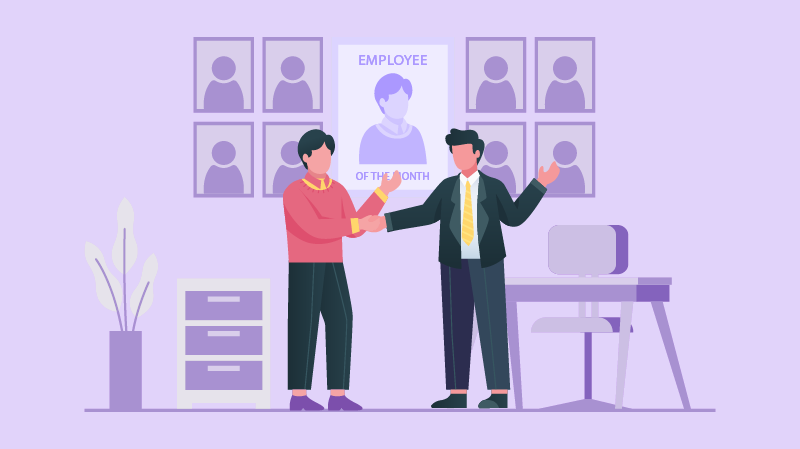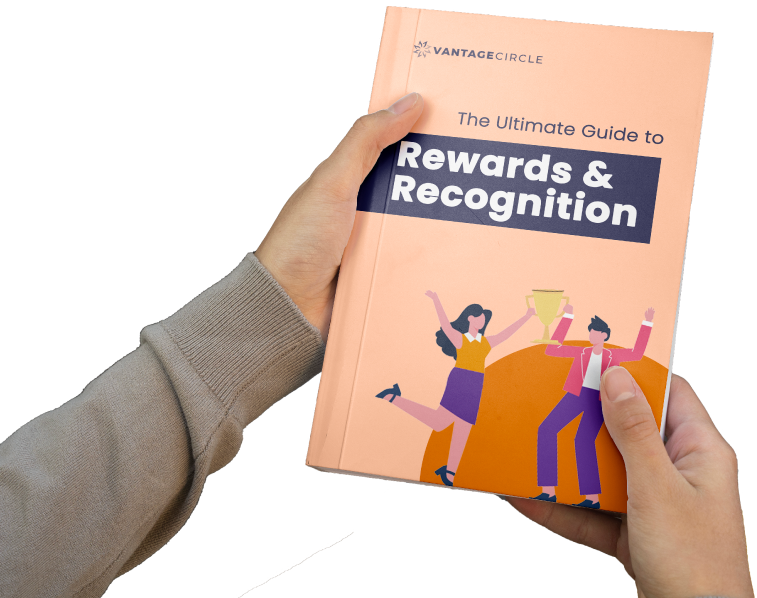How to Write Your First RFP for Employee Recognition Software

A Global Employee Recognition and Wellness Platform
Organizations that nail recognition are 4.6× more likely to see higher engagement and retention. That’s no small number, and it doesn’t happen by chance. The journey starts with one document: your RFP.
An RFP or Request For Proposal is a formal document businesses, organizations or government agencies use to invite vendors to suggest solutions for a specific need. It outlines what the company wants, why they need it, and how vendors should respond with their proposals.
Here’s the twist: most first-time RFPs end up bloated, confusing, or worse—too generic to help anyone choose the right platform. But this isn’t about just buying software; it’s about shaping how employee appreciation lives in your culture.
If you’re tackling your first RFP, you’re not alone. Many HR teams and leaders stand exactly where you are now, staring at a blank page. in fact, a Deloitte survey found that 54% of organizations don’t feel confident in their ability to select the right HR technology. The good news? We’ve reviewed dozens of recognition RFPs across industries, so we know what works, and what doesn’t. Think of this guide as the shortcut that takes the overwhelm out of the process and sets you up for success.
Who Typically Writes an RFP for Recognition Software?

An RFP for employee recognition software is rarely written by just one person, it’s a team effort. Each stakeholder brings a different lens, and together they define what “the right platform” actually means. Miss one, and you risk gaps that derail the decision later.
HR → Focused on boosting employee engagement, retention, and culture fit. (In fact, Gallup reports that highly engaged teams show 21% greater profitability.)
Procurement → Ensures the process is fair, competitive, and cost-efficient.
IT/Security → Prioritizes data privacy, system integration, and compliance with internal security standards.
Finance → Looks closely at ROI, budget impact, and long-term cost savings.
Executive Sponsor (often CHRO or COO) → Champions alignment with business strategy and culture transformation.
When it comes to drafting an RFP for recognition software, it’s never a one-person job. Different departments weigh in with their unique perspectives—HR may be focused on engagement outcomes, while IT cares about security, and Finance looks at ROI. By bringing these voices together, you make sure the final choice balances both people and business priorities.
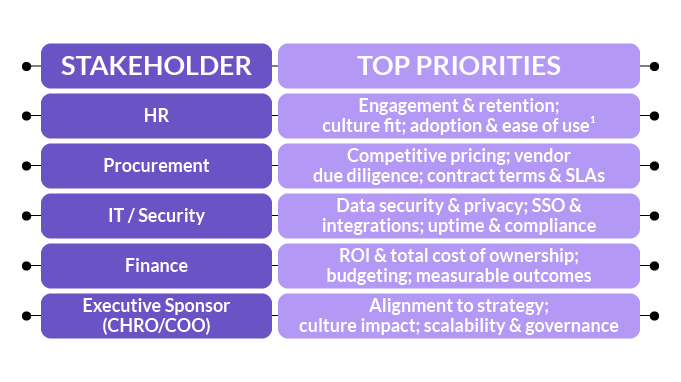
Engaged teams are linked with higher business performance, including 23% higher profitability (Gallup, Q12 Research).
Before You Start: 5 Questions to Ask Yourself First
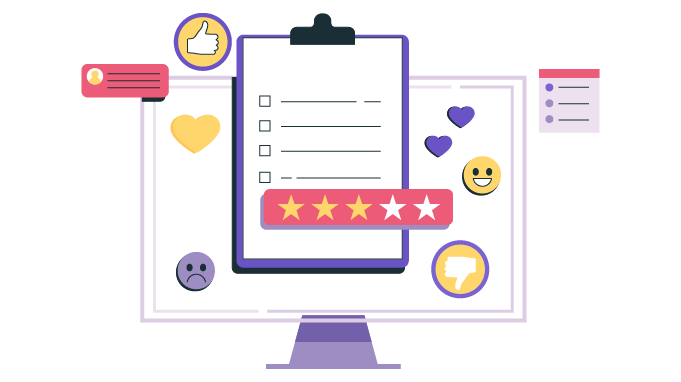
A solid RFP starts long before you send it to vendors. Ask yourself these five questions up front, and you’ll avoid vague requirements that lead to mismatched solutions.
1. What problem are you solving?
Recognition feels ad hoc and inconsistent across teams. You want one platform that standardizes and amplifies appreciation.
2. What outcomes do you expect?
Stronger engagement scores, higher retention in critical roles, and managers who actually use recognition as a leadership tool.
3. How many employees will use this?
3,500 employees across offices in India, the US, and Europe. Adoption expectations: at least 70% within the first year.
4. Do you need global reward support?
Yes—digital reward catalogs across multiple countries with local tax compliance built in.
5. What’s your timeline and budget?
Pilot in Q3, full rollout in Q4. Budget: $200K annually, including implementation and support.
This keeps the questions simple but makes the answers real—so readers can see how their own context might look on paper.
Section-by-Section Breakdown of the Ideal RFP

When building your RFP, think of it as a story: who you are, what you need, and how you expect vendors to deliver. Here is a breakdown of the key sections every recognition software RFP should include plus examples and handy tooltips to make each part crystal clear.
1. Company Overview
What It Is: A snapshot of who you are—your size, industry, and culture.
Example: “We are a global IT services firm with 5,000 employees across 3 countries, known for our collaborative and innovation-driven culture.”
Tooltip: Helps vendors tailor their proposal to your scale and company DNA.
2. Goals & Challenges
What It Is: What you’re trying to achieve with recognition software.
Example: “We aim to boost engagement scores by 20% in the next 12 months while strengthening cross-team collaboration.”
Tooltip: Helps HR and leadership align platform capabilities with business objectives.
3. Functional Requirements
What It Is: The core features you expect from the platform.
Example: “Platform must support peer-to-peer, manager-to-employee, and milestone-based recognition.”
Tooltip: Ensures vendors highlight relevant functionality instead of overwhelming you with generic features.
4. Integration Needs
What It Is: Systems your recognition platform should connect with.
Example: “Must integrate with SAP SuccessFactors for HR data and Slack for daily usage.”
Tooltip: Helps IT evaluate back-end compatibility and user adoption potential.
5. Reward Catalog Expectations
What It Is: The type of rewards you want to offer (global, local, or non-monetary).
Example: “Support multi-currency redemption and include non-monetary recognition options like badges.”
Tooltip: Helps vendors showcase the breadth and flexibility of their reward ecosystem.
6. Reporting & Analytics
What It Is: The insights you expect the platform to deliver.
Example: “Real-time admin dashboard required with usage reports segmented by team and geography.”
Tooltip: Helps HR and leadership measure ROI and program success.
7. Security & Compliance
What It Is: Certifications, data privacy, and security standards you require.
Example: “Vendor must be ISO 27001 certified and GDPR compliant.”
Tooltip: Helps IT and legal assess risk and ensure compliance with internal policies.
8. Support & SLAs
What It Is: Implementation and ongoing support expectations.
Example: “Vendor must provide a dedicated success manager and 24/7 global support.”
Tooltip: Helps your operations team evaluate vendor reliability post-launch.
9. Proposal Format
What It Is: The structure you want vendors to follow in their response.
Example: “Answer all questions in the provided Word template and attach a PPT demo.”
Tooltip: Makes it easier for your evaluation team to compare apples to apples.
By breaking down your RFP this way, you not only make life easier for vendors, but also ensure your internal stakeholders (HR, IT, Finance, Procurement, Leadership) get the answers they care about most.
Sample Questions to Include in Your RFP

Asking the right questions in your RFP ensures vendors go beyond shiny demos and actually prove they can meet your needs. Below are sample questions you can adapt and include—broken into key categories.
Product Questions
- How does your platform encourage both peer-to-peer and manager-led recognition?
- Can recognition be tied to company values or custom behaviors?
- What reporting do administrators and managers receive on recognition activity?
- How do you ensure the platform drives sustained adoption over time?
- Why ask? Helps you confirm if the product truly drives culture change, not just transactions.
Technical & Integration Questions
- Which HRIS and communication tools does the platform integrate with (e.g., SAP SuccessFactors, Workday, Slack, Teams)?
- Is Single Sign-On (SSO) supported, and which providers do you work with?
- What is your typical integration timeline and level of IT involvement?
- How do you handle API-based custom integrations?
- Why ask? Ensures smooth daily usage and reduces IT headaches during implementation.
Rewards Questions
- What types of rewards are supported (global gift cards, experiences, non-monetary options)?
- How do you handle multi-currency redemption and local tax compliance?
- Can employees personalize or choose their rewards?
- What is the average fulfillment time for digital and physical rewards?
- Why ask? Helps you validate global scalability and employee satisfaction with the catalog.
Support Questions
- What does your implementation process look like, and who will guide us through it?
- Will we have a dedicated account or success manager post-launch?
- What support channels (chat, email, phone) and response times are included in your SLA?
- Do you provide training resources for admins and employees?
- Why ask? Ensures you’re not left on your own after launch.
Security Questions
- Which security certifications do you hold (ISO 27001, SOC 2, GDPR compliance)?
- How is employee data stored, encrypted, and protected?
- What controls are in place to manage access and prevent breaches?
- How do you handle data retention and deletion requests?
- Why ask? Gives your IT and legal teams peace of mind about risk and compliance.
Pro tip: Don’t overwhelm vendors with hundreds of questions. Instead, focus on those that separate “nice-to-have” features from mission-critical requirements.
Mistakes First-Time RFP Writers Should Avoid
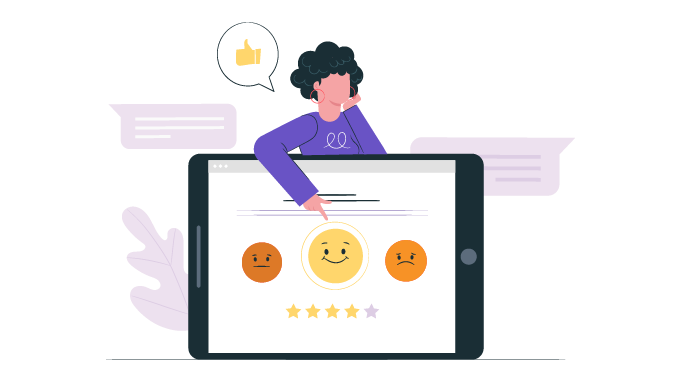
Even the best-intentioned RFPs can miss the mark if they fall into common traps. Here are four pitfalls to watch out for—and how to avoid them:
1. Being Too Generic
If your RFP could apply to any recognition vendor, it won’t help you find the right fit. Be specific about your company culture, goals, and challenges so vendors can tailor their responses.
Tip: Add context like employee demographics, global footprint, or engagement survey results. The more detail you share, the better the proposals you’ll receive.
2. Overloading the RFP with 100+ Questions
A laundry list of questions might feel thorough, but it often overwhelms vendors and slows down evaluation.
Tip: Prioritize 25–40 high-impact questions that highlight what really matters—like integrations, security, and employee adoption.
3. Not Involving Stakeholders Early
An RFP written in isolation can miss critical requirements. For example, IT may care about SSO and security, while Finance focuses on ROI.
Tip: Involve HR, IT, Finance, Procurement, and an executive sponsor from the start to avoid last-minute gaps.
4. Not Setting Scoring Criteria
Without scoring criteria, evaluations become subjective and inconsistent. One vendor’s flashy demo might overshadow another’s stronger long-term fit.
Tip: Define clear weightings (e.g., 30% functionality, 25% integrations, 20% cost, 15% security, 10% support) before you send the RFP.
Avoiding these mistakes will make your RFP not only more effective but also more attractive for vendors to respond to—ultimately speeding up your selection process.
Final Word
Writing your first RFP doesn’t have to feel like guesswork. With clarity, collaboration, and the right questions, you’ll find a partner that does more than deliver software—they’ll help embed recognition into the DNA of your culture.
And whether you use this guide as your starting point or explore solutions like Vantage Circle, the goal is the same: creating a recognition program that drives engagement, retention, and business impact—while making appreciation a natural part of everyday work.










